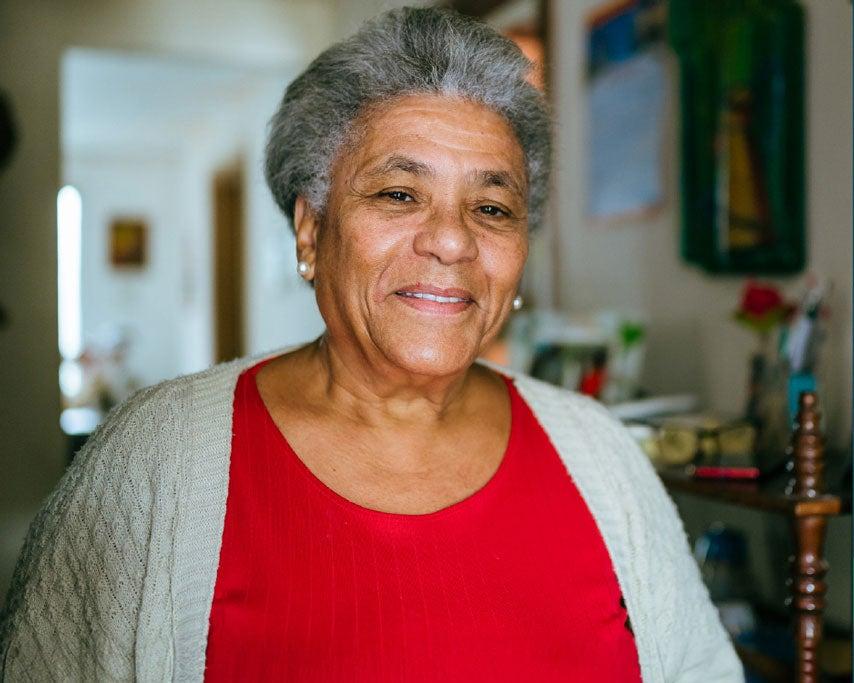
States have partnered with traditional organizations, such as area agencies on aging, aging and disability resource centers, public health departments, community-based organizations, and health care providers and systems. They have also formed non-traditional partnerships with a variety of organizations, including faith-based communities and organizations that serve racial and ethnic minorities, adults with disabilities, and other specific target populations. Partners can expand resources by serving as trainers and leaders, providing outreach and referrals, offering financial or in-kind support, and assisting with other responsibilities related to program planning and implementation.
Successful organizations are deliberate and strategic about their choice of partners—aiming for those with the capacity to embed evidence-based programs into routine operations; those with multiple delivery sites; and those who serve the target audiences. They use a variety of strategies to assure successful partnerships, including securing buy-in of leadership, identifying program champions, maintaining ongoing communication, and documenting roles and responsibilities through formal agreements.
This section lists key partners in alphabetical order and highlights relevant webinars, resources, and success stories for each partner. As you're considering existing and new partnerships, considering using the Partnership Assessment Tool to assess partnership alignment, network construction, and defining responsibilities.
Area agencies on aging (AAAs) and aging and disability resource centers (ADRCs)
AAAs and ADRCs serve in variety of roles to support evidence-based programming:
- Host organizations to train leaders, as well as schedule and conduct workshops
- Implementation sites to hold workshops
- Referral partners to enroll older adults and adults with disabilities in workshops
They offer a source of financial support for CDSME programs through the Older Americans Act Title IIID funds. The Community-Based Care Transitions and Medicaid Home and Community-Based Services Waiver programs that AAAs/ADRCs operate also provide opportunities for partnerships.
| Resource | Link |
| Colorado: Script to Introduce CDSME Programs to ADRC Staff | Download |
Behavioral Health Agencies
One in four older adults experiences a behavioral health problem, such as depression, anxiety, or substance abuse.1 Aging-related changes increase the risk of adverse effects from even moderate levels of alcohol.2 Moreover, older adults are among those most vulnerable to medication misuse and abuse because they use more prescription and over-the-counter medications than other age groups and have increased medication sensitivity, as well as slower metabolism and elimination.3
Organizations implementing CDSME and other evidence-based programs are successfully working with state departments of mental/behavioral health, community mental health and substance abuse treatment centers, advocacy groups, and other organizations that serve adults with behavioral health conditions. These partners provide access to a population that is disparately affected by chronic conditions. They also have potential to provide peer leaders, workshop locations, and reimbursement for services, such as through the Medicaid Health Home model.4
| Resource | Link |
| Practical Strategies to Navigate Mental Health Resources and Services for Older Adults and Caregivers (Featuring PEARLS) | View |
Correctional Facilities
Compared to the general population, individuals who are incarcerated have a higher prevalence of chronic conditions, including hypertension, asthma, arthritis, cervical cancer, and hepatitis.5 Some states have implemented evidence-based programs in correctional facilities or prisoner-in-transition programs to address these disparities. In some instances, former or current inmates have been trained as leaders.
| Resource | Link |
| Partnering with Correctional Facilities to Implement Evidence-Based Health Promotion Programs for Aging Prisoners | View |
Disability Organizations
Adults with physical, intellectual, or developmental disabilities have an increased risk of developing chronic conditions and are less likely to receive preventive services than people without disabilities.6 Organizations implementing evidence-based programs are partnering with a wide variety of disability and advocacy organizations, including centers for independent living, state departments of disability, Easter Seals, group homes, other housing sites for people with disabilities, and disability rights coalitions.
| Resource | Link |
| North Carolina: Toolkit for Being Inclusive of Participants with Disabilities | View |
| Developing Partnerships with the Disability Community | View |
| Engaging People with Disabilities in Evidence-Based Programs | View |
| Chronic Disease Self-Management Education and People with Disabilities | View |
| Resources for Engaging Adults with Disabilities in Evidence-Based Programs | View |
Emergency Medical Services and Fire Departments
Emergency medical services (EMS) and fire department professionals can be partners in connecting adults to community-based services, such as evidence-based programs and transportation services.
| Resource | Link |
| California: EMS Falls Prevention Webinar | View |
| California: Teaming Health Coaches with EMSc | View |
|
Partnering with Fire and Emergency Medical Services to Prevent Falls | View |
| Strengthening Falls Prevention Efforts with the Help of First Responders | View |
| Fire and Falls Webinar Series: Engaging Firefighters and EMS for Falls Prevention | View |
Health care organizations and plans
It is important for community-based organizations to partner with health care organizations to improve population health and to sustain evidence-based programs long-term. Organizations implementing evidence-based programs have established successful partnerships with a variety of health care entities, including hospitals, health plans, managed care organizations, accountable care organizations, federally qualified health centers, and patient-centered medical homes (PCMHs).
Partnerships with health care organizations offer potential to improve population health, reduce health care costs, and achieve sustainable financing. For more information, please visit NCOA’s Roadmap to Community-Integrated Health Care.
| Resource | Link |
| CDC 1-2-3 Approach to Provider Outreach | View |
| California: Partners in Care Flyer for Health Care Payor | Download |
| Utah: CDSME Flyer for Health Care Providers | Download |
| Maryland: Hospital Partner Toolkit | Download |
| Colorado: Program Embedment Readiness Tool | Download |
| Maryland Sample Consent for for Release and Exchange of Medical Information | Download |
Network hub development
It is important to create agreement forms in your partnerships so all engaging entities understand the expectations from the collaboration. Check out the sample agreements below to consider adapting for your partnerships.
Public health agencies
Engaging with state, regional, and local health departments provides opportunities for linkages to other partners, outreach to minority and underserved populations, and possible funding to sustain evidence-based programs.
Explore these Chronic Disease Self-Management Education Success Stories for more detail on what's working.
Sources
1. Substance Abuse and Mental Health Services Administration and Administration on Aging. Older Americans Behavioral Health Issue Brief: Series Overview, 2012. Found on the internet at https://acl.gov/sites/default/files/programs/2016-11/Issue%20Brief%20Series%20Overview.pdf
2. NCOA. Older Adults and Substance Use: What Can We Do to Help? Kristen Lawton Barry, PhD, Research Professor, University of Michigan, Department of Psychiatry
3. SAMHSA and AoA. Older Americans Behavioral Health Issue Brief 5: Prescription Medication Misuse and Abuse among Older Adults. 2012. Found on the internet at https://acl.gov/sites/default/files/programs/2016-11/Issue%20Brief%205%20Prescription%20Med%20Misuse%20Abuse.pdf
4. To learn more about Medicaid Health Homes: https://www.medicaid.gov/state-resource-center/medicaid-state-technical-assistance/health-homes-technical-assistance/health-home-information-resource-center.html
5. Bingswanger, Ingrid. Chronic Medical Diseases among Jail and Prison Inmates. Corrections.com. Oct. 25, 2010. Found on the internet at http://www.corrections.com/news/article/26014-chronic-medical-diseases-among-jail-and-prison-inmates
6. To learn more about working with people with disabilities: Engaging People with Disabilities in Evidence-Based Programs. Found on the internet at https://www.ncoa.org/article/resources-engaging-adults-disabilities-evidence-based-programs/



